A Swell Time
Cruising on the sailboat has been a plethora of wonderful new experiences intermixed with hard, uncomfortable and sometimes miserable moments. One of the most unpleasant things is the rolly anchorage. Before our island travels, we had no REAL concept of what a rolly anchorage meant. Its like; wait, I thought we were at anchor not rolling around on the high seas. What’s happening here?
The time spent at White Cay were some of the worst nights ever. All because Bosco would not stop rolling.
We knew about the Swell Bridle from research, but never put the the knowledge to action. Well we couldn’t stand it any longer and decided from here on out, we will always use this technique in rolly anchorages (if conditions allow).
What is a Swell?
It helps to understand what a swell is, to understand the mechanics and use of a swell bridle. Swells are the waves that are generated by distant weather systems over a huge area of water – aka the open ocean. They have a long wavelength and are not affected by the immediate local wind/weather. The direction of the ocean swell doesn’t necessarily line up with the direction of the wind right here and now.
Islands interfere with the dynamics of the swell also. Things like Shoals, groundswells, reflection, refraction, trench effect, island effect, wrap around, etc. all change the nature of the swell. So depending on where you are, the swell will not always behave the way you think it should.
Why do we care?
Because when anchored in the sailboat, the bow (or front) naturally wants to face the wind. For the most part, this is the most comfortable and natural position in terms of motion. When the ocean swell comes from a different direction than the wind, it causes the boat to rock and roll. But not the good kind. Get out the Dramamine if your prone to sea sickness!
When the swell and wind are around 45 degrees (or more) off from each other, the boat starts a rockin’. The swell bridle is a means to counteract the natural position of the boat from windward to swell-ward. Is that even a word? It doesn’t stop the swell, but forces the boat to face it in a much more comfortable and manageable position. It will pitch up and down instead of rolling from side-to-side. Trust me when I say this is MUCH MUCH BETTER.
The “How To” Swell Bridle
What You Need
All you really need for the swell bridle is some extra 1/2″ – 5/8″ line. Generally a length of 50-60 feet will do just fine. We had an extra halyard laying around that we used. You’ll also need a way of attaching this “swell” line to the main anchor rode. We use a rolling hitch which is simple and effective. Then you will need either a cleat or a winch at the back of your boat to adjust the line.
An important thing to note when setting up the swell bridle: You want is a good amount of distance between yourself and nearby anchored boats and the shore. When setting up the swell bridle, you increase windage (i.e. – force of the wind hitting the boat), which increases the potential for anchor drag. Mitigate this by letting out more scope.
- Attach the bridle to the main anchor rode or chain with a rolling hitch (or chain hook), forward of the bow.
- Determine where your swell and wind are coming from. This will dictate the side of the boat to set the bridle.
- Lead the bridle line back to the stern on the side of the boat that will be to windward. Make sure to keep the line outside of all of your lines, pulpits, stays, etc.
- Wrap the line around a winch and cleat to secure. Winch the line to turn the boat head-to-swell.
- Adjustments and fine-tuning are necessary as conditions evolve.
The Rolling Hitch
- Begin by making a turn around the object, bringing the working end back between the object and the standing part. Cross over the standing part away from the desired direction of pull.
- Make a second turn that exactly follows the first, and hence also passes between the object and standing part and then crosses over the standing part, away from the direction of pull. Make sure the second turn “tucks” between the first turn and the standing part; that is what gives this version extra grip when made around another rope.
- Finish with a half hitch, moving around the object in the same direction as the first turns, as for a clove hitch.
- Dress by snugging the hitch around the object before applying load.
We have found that if there is not enough wind, the swell bridle doesn’t do anything. The boat should be pulling back on the anchor line in order for the bridle to do its job. Otherwise, the only other real downfall is that you are no longer facing the wind. So no more fresh breeze blowing through. Its such a small price to pay for comfort, and thats why we have boat fans!
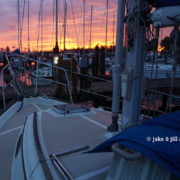

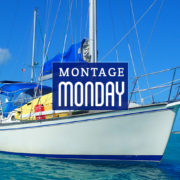




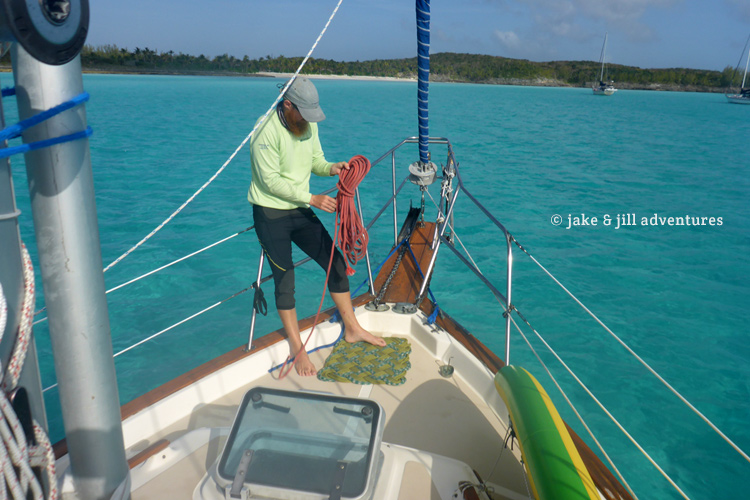
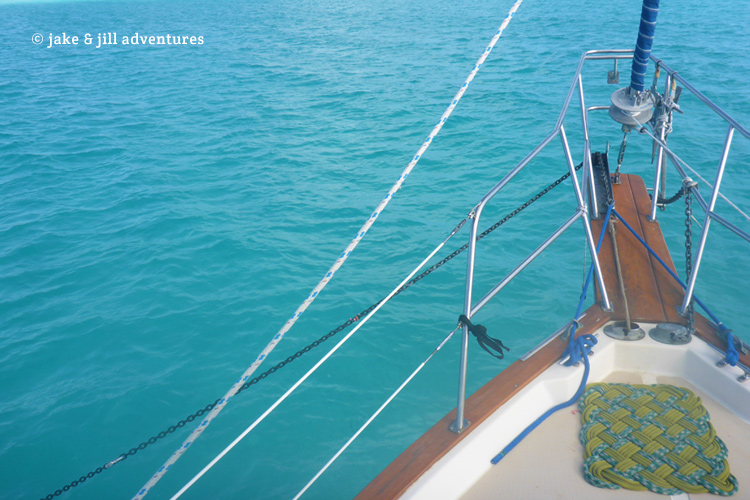
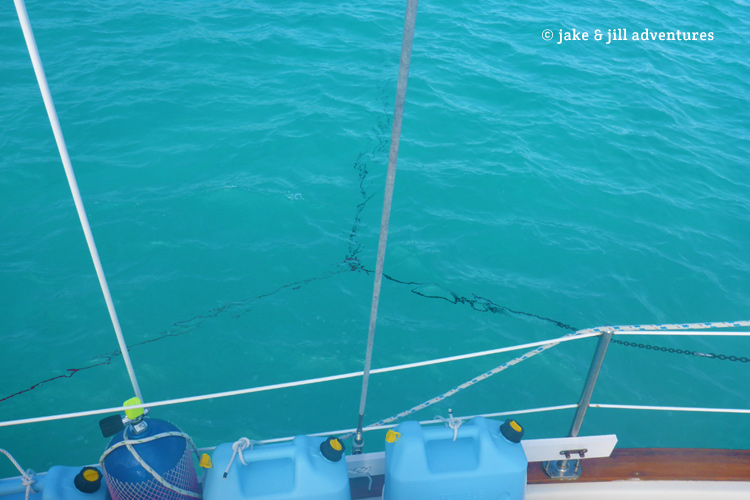
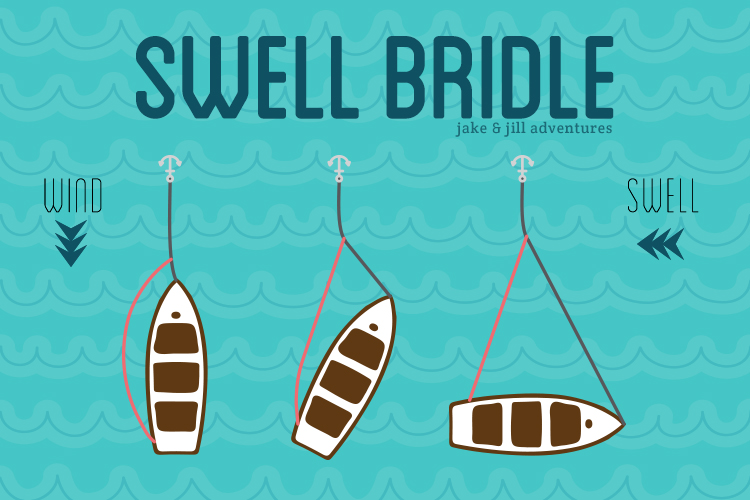
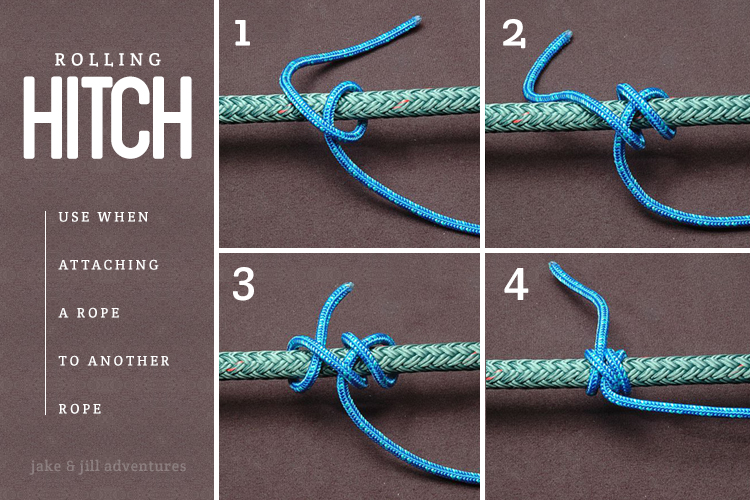
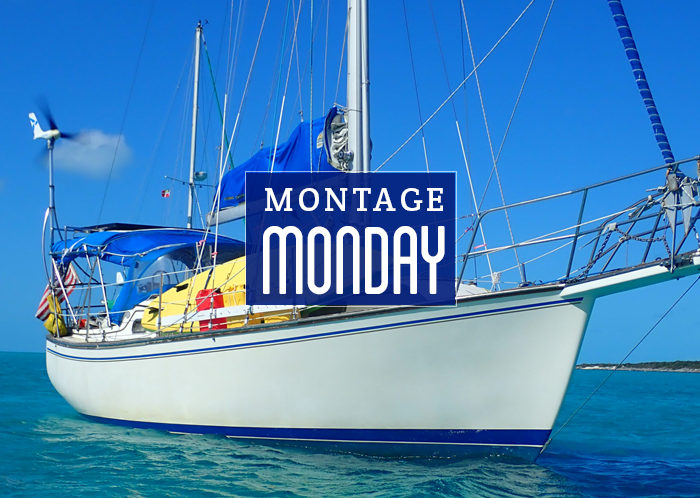

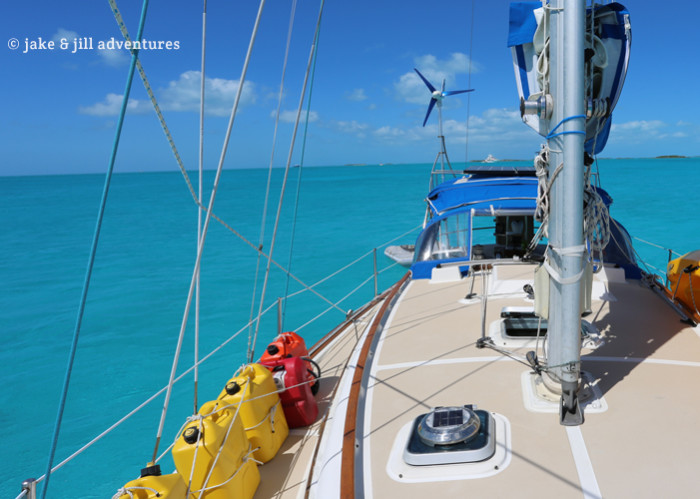

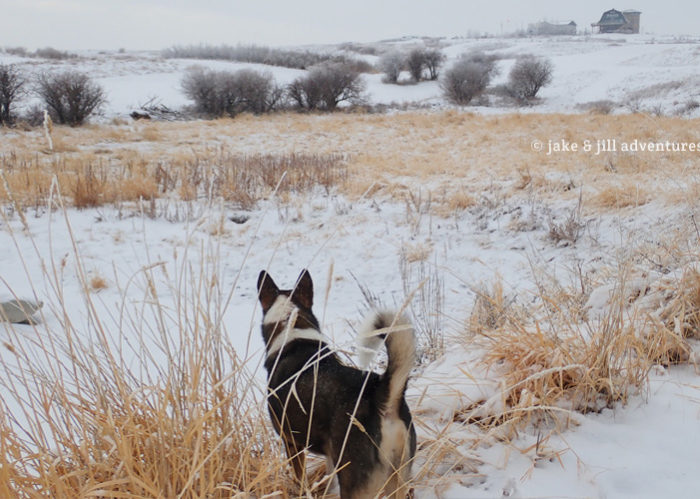




Wonderful video and very informative. We will use this technique when we reach the islands. Thank you!
Nate & Marie.
Thanks you guys – happy sailing to you!
Jake have you ever tried a flopper stopper? Seems the same problem, just different techniques.
Steve & Margie
36′ Mariner Cutter Ketch
“Sabor”
We have not but thank you for the suggestion – we will look into that!
Sounds SWELL? …..not!
yes its not very swell at all – its more like hell without the bridle option
As someone who has set this up at two different occasions during my wife and I’s 23 year full time liveaboard and cruising over 60, 000 miles between Ct. and the Bahamas, usually ICW ( 16 round trips) aboard two vessals, (37 ft Alberg sloop, 42ft Bristol trawler ) during the years 1983 and 2006, we found it not worth the effort. Glad you know it and good luck but we then put our efforts into never being in that type of open anchorage, or in the case of some areas switch that have that oppertunity pick a better spot. Good luck and good weather to you and I know you’ve already found it to be a wonderful way to live.
Yes definitely agree. It would be wonderful if we never needed to use a bridle, but the setup is pretty fast. Its worth it in those unlucky instances.